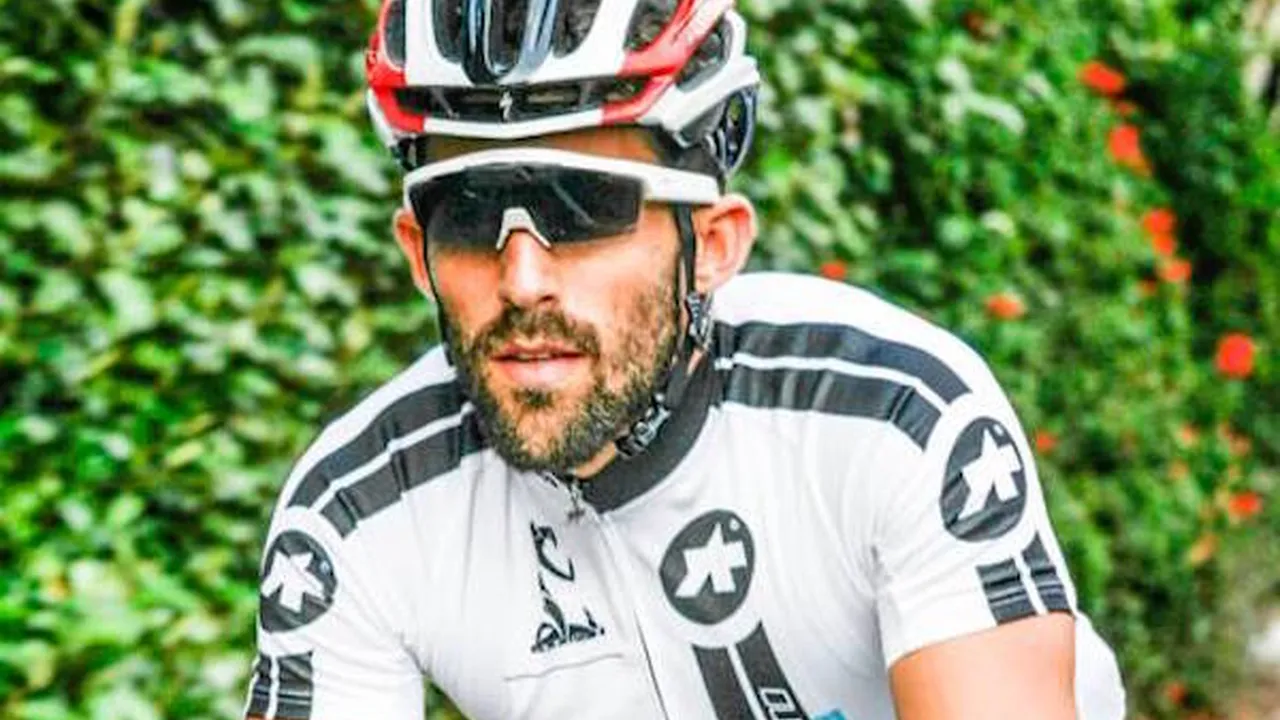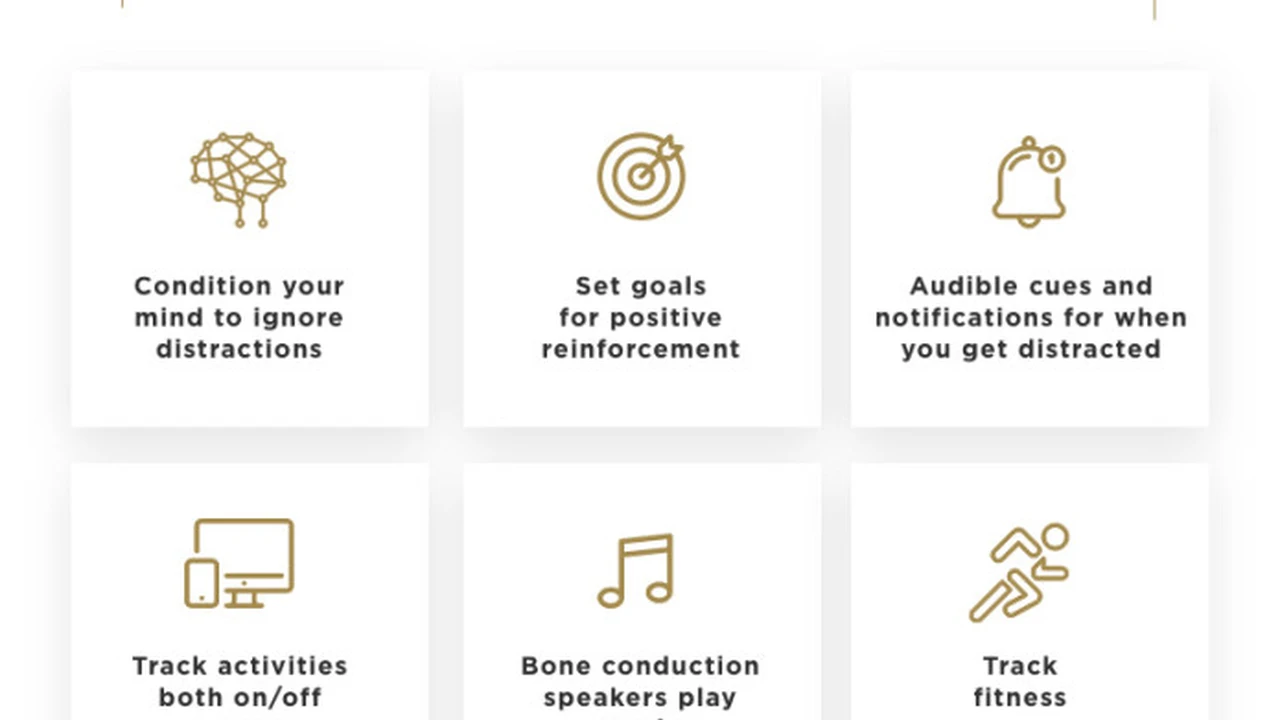Smart Glasses for Field Service and Remote Assistance
Enable remote assistance and enhance field service operations with the power of smart glasses.

Smart Glasses for Field Service and Remote Assistance Revolutionizing On-Site Operations
In today's fast-paced industrial and service sectors, efficiency and rapid problem-solving are paramount. Field service technicians often face complex issues in remote locations, requiring specialized knowledge that might not always be readily available on-site. This is where smart glasses for field service and remote assistance step in, revolutionizing how businesses operate and support their teams. These innovative devices provide a hands-free, immersive experience, allowing technicians to access information, collaborate with experts, and receive real-time guidance without ever leaving the job site. Imagine a scenario where a junior technician is faced with a critical machine breakdown. Instead of waiting for a senior expert to travel hours to the site, they can simply don a pair of smart glasses, connect with the expert remotely, and receive visual instructions overlaid directly onto their field of view. This not only accelerates problem resolution but also significantly reduces downtime, travel costs, and the carbon footprint associated with traditional support methods. The adoption of smart glasses in field service is not just a trend; it's a strategic shift towards more agile, efficient, and sustainable operations. From manufacturing plants to energy grids, and from healthcare facilities to telecommunications infrastructure, the applications are vast and the benefits are tangible. This comprehensive guide will delve deep into the world of smart glasses for field service and remote assistance, exploring their functionalities, key benefits, leading products, practical use cases, and what the future holds for this transformative technology. We'll also provide valuable insights into choosing the right smart glasses for your specific needs, considering factors like durability, connectivity, battery life, and software integration. Whether you're a business owner looking to optimize your field operations or a technician eager to embrace cutting-edge tools, this article will equip you with the knowledge to navigate the exciting landscape of smart glasses in field service.
Understanding Smart Glasses for Remote Assistance and Field Operations
Smart glasses, in the context of field service and remote assistance, are wearable computing devices that integrate digital information with the user's real-world view. Unlike traditional tablets or laptops, they offer a hands-free experience, which is crucial for technicians who often need both hands to perform tasks. The core functionality revolves around augmented reality (AR), where digital content, such as instructions, diagrams, or live video feeds, is superimposed onto the physical environment. This allows for a seamless blend of the digital and physical worlds, enhancing the technician's perception and capabilities. Key components typically include a display (either optical see-through or video see-through), a camera, microphones, speakers, and various sensors (accelerometers, gyroscopes, magnetometers) for tracking head movements and environmental context. Connectivity options like Wi-Fi and cellular data enable real-time communication and data transfer. The software running on these devices is equally important, often featuring remote assistance platforms that facilitate live video calls, annotation tools, document sharing, and workflow management. This combination of hardware and software empowers field technicians to perform complex tasks with greater accuracy and efficiency, even when faced with unfamiliar equipment or challenging situations. The ability to receive immediate visual guidance from an off-site expert can drastically reduce errors, improve first-time fix rates, and enhance overall service quality. Furthermore, smart glasses can be used for training purposes, allowing new technicians to learn on the job by following expert instructions or accessing interactive training modules. The data collected by smart glasses, such as video recordings of repairs or sensor data from equipment, can also be invaluable for post-service analysis, predictive maintenance, and continuous improvement initiatives. This holistic approach to field service management, powered by smart glasses, represents a significant leap forward in operational excellence.
Key Benefits of Smart Glasses in Field Service and Remote Support
The integration of smart glasses into field service operations brings a multitude of benefits that directly impact efficiency, cost-effectiveness, and overall service quality. These advantages extend beyond mere convenience, fundamentally transforming how businesses manage their on-site technical support. One of the most significant benefits is the reduction in travel time and costs. By enabling remote experts to guide on-site technicians, the need for costly and time-consuming travel is drastically minimized. This not only saves money on flights, accommodation, and fuel but also reduces the carbon footprint of operations, aligning with sustainability goals. Another crucial advantage is the improvement in first-time fix rates. With real-time visual guidance and access to critical information, technicians are better equipped to diagnose and resolve issues on their initial visit, avoiding costly repeat visits and customer dissatisfaction. This leads to higher customer satisfaction and stronger client relationships. Smart glasses also contribute to enhanced technician safety. In hazardous environments, remote experts can guide technicians through dangerous procedures, ensuring adherence to safety protocols and minimizing risks. The hands-free nature of the devices means technicians can maintain focus on their tasks without being distracted by holding a tablet or phone. Furthermore, smart glasses facilitate knowledge transfer and training. Less experienced technicians can learn from seasoned experts in real-time, accelerating their skill development and reducing the learning curve. This is particularly valuable in industries facing a shortage of skilled labor, as it allows for more efficient onboarding and upskilling of the workforce. The ability to record sessions also provides valuable training material for future reference. Increased operational efficiency and reduced downtime are direct outcomes of faster problem resolution. When equipment is repaired quickly, production lines can resume operation sooner, minimizing financial losses associated with downtime. This translates to a more productive and profitable business. Lastly, smart glasses enable better data collection and analysis. Video recordings of repairs, annotated images, and sensor data can be automatically logged, providing a rich source of information for post-service analysis, predictive maintenance, and continuous improvement of service procedures. This data-driven approach allows businesses to identify recurring issues, optimize workflows, and make more informed decisions. In essence, smart glasses empower field service organizations to deliver faster, smarter, and more reliable service, ultimately leading to a stronger competitive advantage.
Leading Smart Glasses Products for Industrial and Field Use Cases
The market for industrial smart glasses is growing, with several key players offering robust solutions tailored for demanding field service environments. When selecting a device, factors like durability, display quality, battery life, and software ecosystem are crucial. Here are some of the leading products and their typical use cases and pricing:
RealWear Navigator 500 Series Rugged Smart Glasses for Industrial Applications
The RealWear Navigator series, including the Navigator 500 and Navigator 520, are purpose-built for industrial environments. They are known for their extreme ruggedness, voice-controlled interface, and high-resolution display. The Navigator 500 features a modular design, allowing for easy upgrades and customization. The Navigator 520 enhances this with an improved 20.7 MP camera and a larger, brighter display. These devices are designed to withstand drops, dust, and water, making them ideal for harsh conditions. Their voice-only interface is a significant advantage in noisy environments or when technicians are wearing gloves, as it eliminates the need for touch interaction. They integrate seamlessly with leading remote assistance platforms like Microsoft Teams, Zoom, and various specialized industrial AR software solutions.
- Typical Use Cases: Manufacturing, energy (oil & gas, utilities), automotive, logistics, construction, mining, and any environment requiring hands-free operation in challenging conditions. Ideal for remote inspection, guided assembly, quality control, and troubleshooting.
- Key Features: IP66 rated (dust and water resistant), drop-tested, voice-controlled UI, hot-swappable battery, high-resolution camera, modular design.
- Estimated Price Range: $2,000 - $2,500 USD (device only, software subscriptions are separate).
Vuzix Smart Glasses M400 and M4000 Series Enterprise Grade Wearables
Vuzix offers a range of enterprise-grade smart glasses, with the M400 and M4000 being prominent models. The Vuzix M400 is a powerful, rugged smart glass with an OLED display and a high-resolution camera, designed for demanding industrial applications. The M4000 features a waveguide optical engine, offering a larger field of view and a more transparent display, which can be beneficial for tasks requiring a less obstructed view of the real world. Both models run on Android, providing flexibility for custom application development and integration with existing enterprise systems. Vuzix smart glasses are known for their robust build quality and strong developer support.
- Typical Use Cases: Field service, logistics, warehousing, healthcare, manufacturing, and remote training. Excellent for pick-and-place operations, remote expert guidance, and data visualization.
- Key Features: Rugged design, powerful processor, high-resolution camera, various display options (OLED for M400, waveguide for M4000), Android OS, extensive accessory ecosystem.
- Estimated Price Range: $1,500 - $2,500 USD (depending on model and configuration).
Microsoft HoloLens 2 Mixed Reality Headset for Advanced AR Applications
While technically a mixed reality headset rather than traditional smart glasses, the Microsoft HoloLens 2 is a powerful tool for advanced remote assistance and field service applications, especially those requiring complex 3D overlays and spatial computing. It offers a wide field of view, comfortable design, and advanced hand and eye tracking. HoloLens 2 excels in scenarios where precise 3D model overlay, collaborative design, or complex assembly instructions are needed. Its integration with Microsoft Dynamics 365 Guides and Remote Assist makes it a formidable solution for enterprise use.
- Typical Use Cases: Complex machinery repair, collaborative design reviews, remote training with 3D models, architectural and engineering visualization, healthcare (surgical planning, remote consultation).
- Key Features: Wide field of view, advanced hand and eye tracking, spatial mapping, comfortable design, integration with Microsoft ecosystem.
- Estimated Price Range: $3,500 - $5,000 USD (premium pricing reflects advanced capabilities).
Epson Moverio Smart Glasses BT-40 and BT-40S Transparent AR Displays
Epson Moverio smart glasses, such as the BT-40 and BT-40S, stand out with their transparent Si-OLED displays, offering a true optical see-through experience. This means the digital content appears as an overlay without obscuring the user's view of the real world, which is crucial for tasks requiring full situational awareness. The BT-40S includes a controller for enhanced processing power and connectivity. They are lighter and more comfortable for extended wear compared to some rugged industrial models, making them suitable for less harsh environments or applications where comfort is a priority.
- Typical Use Cases: Remote assistance in less rugged environments, cultural tourism, healthcare (patient education, remote consultation), drone piloting, subtitling for live events, quality inspection.
- Key Features: Transparent Si-OLED display, comfortable and lightweight design, high resolution, USB-C connectivity (BT-40), dedicated controller (BT-40S).
- Estimated Price Range: $500 - $1,000 USD (more accessible price point for certain applications).
Google Glass Enterprise Edition 2 Lightweight and Versatile
Google Glass Enterprise Edition 2 is a lightweight and versatile smart glass designed for enterprise use. It features an improved camera, faster processor, and enhanced battery life compared to its predecessors. Its compact form factor makes it comfortable for extended wear, and it integrates well with various enterprise applications. While not as rugged as RealWear or Vuzix, it offers a good balance of performance and portability for many field service scenarios.
- Typical Use Cases: Logistics, manufacturing, healthcare, quality assurance, remote training, and light field service tasks. Ideal for hands-free access to checklists, work instructions, and remote expert calls.
- Key Features: Lightweight design, improved camera, faster processor, enhanced battery life, Android OS, comfortable for extended wear.
- Estimated Price Range: $1,000 - $1,500 USD.
Comparing Smart Glasses for Field Service Key Considerations and Features
Choosing the right smart glasses for your field service operations involves a careful evaluation of several key factors. No single device is perfect for every scenario, so understanding your specific needs and the capabilities of different models is crucial. Here's a comparison of important features:
Ruggedness and Durability for Harsh Environments
Field service often takes place in challenging conditions, from dusty construction sites to wet industrial plants. Therefore, the ruggedness of smart glasses is paramount. Look for devices with high IP (Ingress Protection) ratings (e.g., IP66, IP67, IP68) indicating resistance to dust and water. Drop test ratings (e.g., MIL-STD-810G) are also important to ensure the device can withstand accidental drops. RealWear Navigator series and Vuzix M400 are excellent examples of highly rugged devices built for extreme conditions. Microsoft HoloLens 2, while powerful, is less rugged and more suited for controlled industrial environments or clean rooms.
Display Type and Field of View for Optimal Information Overlay
The display is where the digital information meets the real world. Different display technologies offer varying experiences. Optical see-through displays (like Epson Moverio, Google Glass, Vuzix M4000) allow the user to see the real world directly through transparent lenses, with digital content projected onto them. This provides a less intrusive experience and is good for tasks requiring full situational awareness. Video see-through displays (like RealWear Navigator) use a camera to capture the real world and then overlay digital content onto that video feed, which is then shown on a small screen in front of the eye. This can offer a more controlled viewing experience and is often paired with higher resolution cameras. The field of view (FOV), measured in degrees, determines how much of the digital content can be seen at once. A larger FOV (like HoloLens 2) is beneficial for complex 3D models or multiple data points, while a smaller FOV might suffice for simple text instructions.
Connectivity Options Wi-Fi, Cellular, and Bluetooth for Seamless Communication
Reliable connectivity is essential for remote assistance. Most smart glasses support Wi-Fi for local network access. For field operations in remote areas, cellular connectivity (4G/LTE or 5G) is crucial to ensure continuous communication with remote experts and cloud-based resources. Bluetooth is important for connecting peripherals like external sensors, barcode scanners, or hearing protection. Consider the availability of these options and their performance in your typical operating environments. Some devices might require a tethered smartphone for cellular connectivity, while others have it built-in.
Battery Life and Hot-Swappable Batteries for Extended Shifts
Field service tasks can be lengthy, so sufficient battery life is critical. Look for devices that offer at least 4-8 hours of continuous use. Even better are devices with hot-swappable batteries (like RealWear Navigator), which allow technicians to replace a depleted battery with a fresh one without powering down the device, ensuring uninterrupted workflow throughout an extended shift. This feature significantly enhances productivity and reduces downtime.
Camera Quality and Video Streaming Capabilities for Clear Visuals
The camera is the eyes of the remote expert. A high-resolution camera (e.g., 16MP or 20MP) is essential for capturing clear images and video of the problem area. Stable video streaming capabilities are equally important to ensure the remote expert receives a smooth, real-time view without lag or pixelation. Features like optical image stabilization can also be beneficial in shaky environments. The ability to zoom and focus on specific details is also a valuable asset.
Audio Quality and Noise Cancellation for Effective Communication
In noisy industrial environments, clear audio communication is paramount. Look for smart glasses with multiple microphones and advanced noise cancellation technology to filter out background noise, ensuring that both the technician and the remote expert can hear each other clearly. Voice control accuracy is also heavily dependent on good audio input, especially in loud settings. RealWear devices, for instance, are renowned for their excellent noise cancellation in industrial settings.
Software Ecosystem and Integration with Existing Platforms
The hardware is only as good as the software it runs. Consider the smart glasses' operating system (e.g., Android, Windows Mixed Reality) and its compatibility with your existing enterprise software. Many smart glasses integrate with popular remote assistance platforms like Microsoft Dynamics 365 Remote Assist, TeamViewer Frontline, Librestream Onsight, and Vuforia Chalk. Ensure the chosen solution offers features like live video streaming, annotation tools, document sharing, and workflow management. The ease of developing custom applications for specific workflows is also a consideration for larger enterprises.
Comfort and Ergonomics for All-Day Wear
Technicians might wear smart glasses for extended periods, so comfort and ergonomics are important. Factors like weight distribution, adjustability, and compatibility with safety gear (e.g., hard hats, safety glasses) should be considered. Lighter devices like Google Glass or Epson Moverio might be more comfortable for less strenuous tasks, while more rugged devices like RealWear are designed to be worn with industrial headwear.
Practical Use Cases of Smart Glasses in Field Service and Remote Assistance
The versatility of smart glasses allows for a wide range of applications across various industries, fundamentally changing how field service is delivered. Here are some compelling practical use cases:
Remote Expert Guidance and Troubleshooting for Complex Machinery
This is perhaps the most common and impactful use case. When a complex machine breaks down, a local technician, even if experienced, might not have the specific expertise to diagnose and fix the issue. With smart glasses, they can connect with a senior expert located anywhere in the world. The expert sees exactly what the technician sees, can draw annotations directly onto the technician's field of view (e.g., circling a faulty component, drawing an arrow to a specific valve), and provide verbal instructions. This real-time, visual collaboration drastically reduces downtime and the need for expert travel. Industries like manufacturing, energy, and heavy equipment rely heavily on this for rapid problem resolution.
Guided Workflows and Step-by-Step Instructions for Assembly and Maintenance
Smart glasses can display digital work instructions, checklists, and diagrams directly in the technician's line of sight. This is invaluable for complex assembly processes, routine maintenance, or quality control checks. Technicians can follow step-by-step guides, ensuring accuracy and consistency, especially for new or less experienced personnel. This reduces errors, improves efficiency, and ensures compliance with standard operating procedures. For example, in an automotive plant, a technician can see an overlay of where each bolt needs to be tightened and to what torque specification.
Remote Inspections and Quality Assurance for Enhanced Compliance
Instead of sending an inspector to a remote site, smart glasses enable remote inspections. An on-site worker can wear the glasses, and a remote inspector can guide them through the inspection process, capturing photos and videos, and making real-time observations. This is particularly useful for quality assurance in construction, infrastructure, or manufacturing, ensuring compliance with standards and regulations without extensive travel. It also allows for immediate feedback and rectification of issues.
On-Site Training and Skill Development for New Technicians
Smart glasses offer an immersive and interactive platform for training. New technicians can shadow experienced colleagues remotely, or access interactive training modules that overlay instructions onto real equipment. This 'learning by doing' approach, combined with expert guidance, accelerates skill development and reduces the time it takes for new hires to become fully proficient. It also allows for standardized training across different locations, ensuring consistent skill levels.
Data Capture and Documentation for Improved Record Keeping
Smart glasses can automatically capture photos and videos of repairs, inspections, or completed tasks. This visual documentation is invaluable for record-keeping, auditing, and dispute resolution. Technicians can also verbally log observations or data points, which can be transcribed and integrated into enterprise resource planning (ERP) or customer relationship management (CRM) systems. This reduces manual data entry, improves accuracy, and provides a rich historical record of all field activities.
Inventory Management and Parts Identification for Streamlined Logistics
In warehouses or large industrial sites, smart glasses can assist with inventory management and parts identification. By scanning barcodes or visually identifying components, technicians can quickly locate parts, verify stock levels, and even order replacements hands-free. This streamlines logistics, reduces errors in picking, and ensures that technicians have the right parts when they need them, minimizing delays.
Emergency Response and Disaster Relief for Critical Situations
In emergency situations or disaster relief efforts, smart glasses can provide critical support. First responders can share live video feeds with remote command centers, allowing experts to assess situations, provide guidance, and coordinate efforts more effectively. This can be crucial for search and rescue operations, hazardous material incidents, or infrastructure damage assessment, where every second counts.
The Future of Smart Glasses in Field Service and Remote Assistance
The trajectory of smart glasses in field service and remote assistance is one of continuous innovation and increasing integration. We are only at the beginning of realizing their full potential, and several trends indicate a transformative future for this technology.
Enhanced AI and Machine Learning Integration for Predictive Assistance
Future smart glasses will leverage artificial intelligence and machine learning to provide even more proactive and intelligent assistance. Imagine a scenario where the smart glasses, through their cameras and sensors, can identify a potential issue with a machine even before the technician does, based on visual cues or sensor data. AI could then suggest troubleshooting steps, pull up relevant manuals, or even predict component failures. Machine learning algorithms will continuously learn from past repairs and expert interactions, making the guidance more precise and personalized over time. This will move beyond reactive remote assistance to predictive and prescriptive guidance.
5G Connectivity for Ultra-Low Latency and High-Bandwidth Streaming
The widespread rollout of 5G networks will significantly enhance the capabilities of smart glasses. 5G's ultra-low latency and high bandwidth will enable seamless, high-definition video streaming from remote locations, even in congested environments. This means remote experts will experience virtually no lag, making real-time collaboration feel even more natural and effective. It will also facilitate the transfer of large 3D models and complex data sets, opening up new possibilities for advanced AR applications in the field.
Improved Ergonomics and Miniaturization for All-Day Comfort
As technology advances, smart glasses will become even lighter, more comfortable, and more aesthetically pleasing. Miniaturization of components will allow for sleeker designs that resemble regular eyewear, increasing user acceptance and reducing fatigue during extended wear. Improved battery technology will also contribute to lighter devices with longer operational times, making them truly viable for all-day use without interruption.
Integration with Digital Twins and IoT for Comprehensive Asset Management
The convergence of smart glasses with digital twin technology and the Internet of Things (IoT) will create powerful new paradigms for asset management. Technicians wearing smart glasses will be able to overlay real-time sensor data from IoT-connected equipment directly onto the physical machine. They could see temperature readings, pressure levels, or performance metrics superimposed on the actual components. This real-time data, combined with a digital twin (a virtual replica of the physical asset), will enable highly accurate diagnostics, predictive maintenance, and optimized operational strategies.
Advanced Haptics and Gesture Control for Intuitive Interaction
Beyond voice commands, future smart glasses may incorporate more advanced haptic feedback and gesture control. Haptic feedback could guide technicians through procedures with subtle vibrations, indicating correct placement or torque. Advanced gesture recognition could allow for more intuitive interaction with digital content, such as pinching to zoom on a diagram or swiping to navigate through instructions, further enhancing the hands-free experience.
Cross-Platform Interoperability and Open Standards for Seamless Ecosystems
As the market matures, there will be a greater push towards cross-platform interoperability and open standards. This will allow different smart glass devices to seamlessly communicate with various remote assistance platforms and enterprise systems, reducing vendor lock-in and fostering a more integrated ecosystem. This will simplify deployment and management for businesses, making smart glasses an even more attractive investment.
The future of smart glasses in field service is bright, promising a world where technical expertise is always at a technician's fingertips, operations are more efficient, and problem-solving is faster and more precise than ever before. This technology is not just about augmenting reality; it's about augmenting human potential and transforming the very nature of work in the field.
:max_bytes(150000):strip_icc()/277019-baked-pork-chops-with-cream-of-mushroom-soup-DDMFS-beauty-4x3-BG-7505-5762b731cf30447d9cbbbbbf387beafa.jpg)






